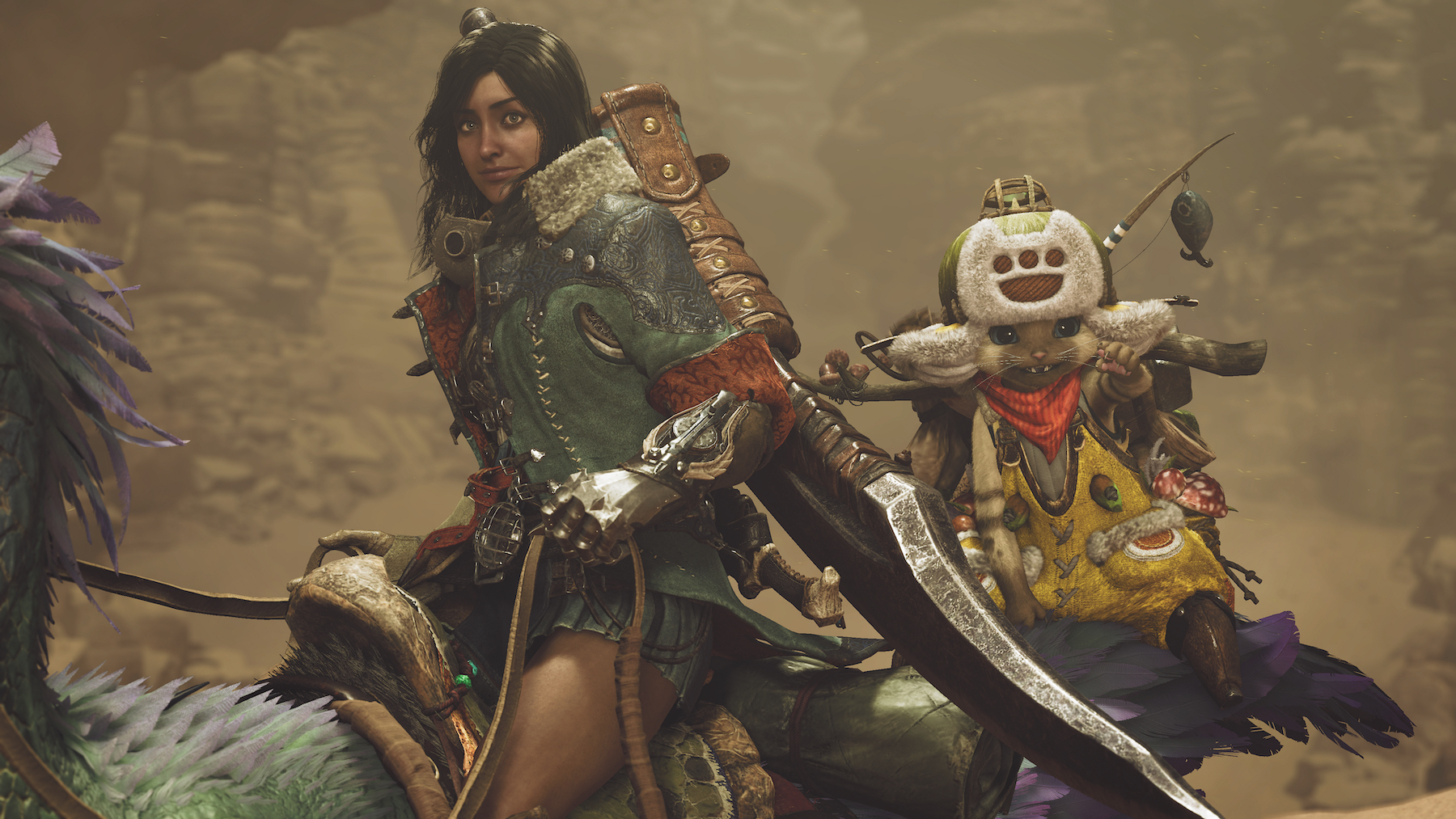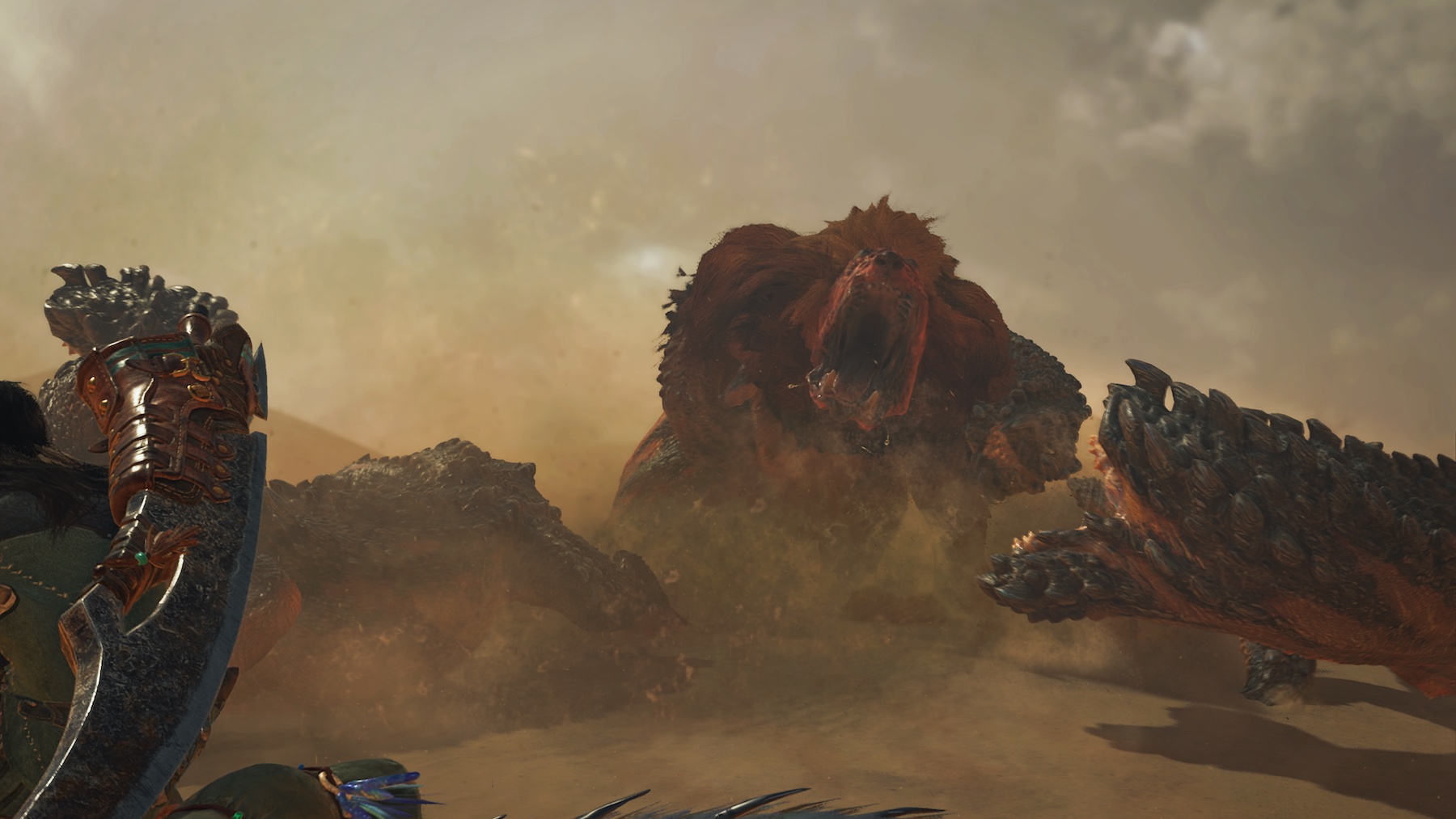
A decade ago, a Monster Hunter environment was essentially a series of battle rooms, with loading screens between each piece of the map. Chasing down a monster to finish it off meant having to put up with a few of those loads every hunt. With its two latest games, World and Rise, Capcom did away with that technical limitation, but another major bit of rigidity remained: every mission had to be selected from a job board or NPC, then launched to load into a predetermined world state.
In Monster Hunter Wilds, that's gone, too.
Once you leave the hub and head out into the field to hunt, you can stay there as long as you want—setting up custom camps that serve as fast travel points with no loading, attacking monsters to automatically begin missions, and remaining in the field after slaying and carving up a monster. Those are all niceties that will cut down on the amount of time spent staring at loading screens, but Wilds is going deeper, maintaining the effects of your hunts on the ecosystem even when you do return to the hub. According to game director Yuya Tokuda, there is no reset back to a "default" state.
"The ecosystem is consistently maintained," Tokuda told me in an interview at Summer Game Fest. "Even as you return to base, the world outside is moving on and continuing where you left it in the background."
As I wrote in my impressions of Capcom's hands-off demo at SGF, by focusing on this systemic simulation Wilds seems to be taking the exact path I hoped Monster Hunter would go down. Tokuda explained that when a carnivorous monster hunts down an herbivore and takes it away from its pack, that could send the survivors fleeing to another part of the map. If food then became scarce for the carnivore, that'd change its own hunting pattern, potentially sending it somewhere new itself. At the same time, weather effects will change monsters' behavior, as will the continuous day/night cycle. These kinds of effects will remain persistent and dynamic as you play.
"Let's say you hunted doshaguma and reduced the number of them on the map. When we open the map the next time, if you want to find one to hunt, there might not be as many," Tokuda said. "If you pull down some rocks that hang in a cave to attack a monster, it'll be a while before those are ready again, because they kind of 'develop' on their own timescale. So that will affect the next time you go there."

Perhaps a game world dozens of hours into its simulation won't feel all that different from the one we first set foot into, but I'm hopeful we end up really seeing and feeling the impact of our hunts after hours and hours in the field. Capcom has made sure that any ripple effects won't lead to any frustrating extinction events, though:
"There are quests that are more standardized, in the sense that they're 'packaged up' for you to go out and do something with specific conditions. If you've hunted the doshaguma nearby until there are no more, you won't be locked off a story quest that requires you to hunt the doshaguma. That story quest will generate with the conditions required for the quest to actually happen. So you can think of it as there being two different ways to approach quests that coexist within the game."
In other important news, Tokuda gave me a hint of what to expect from Wilds' iteration of Monster Hunter's most important weapon: the hunting horn.







